SEARCH






|
|
|
|


by Yan Zhang
Since the first digital SLR camera was invented in 1991, a revolution has occurred in the world of photography. Now, every minute, more than 200,000 new images are uploaded to various social media sites over the Internet, such that our previous generations would never have imagined possible. Yes, we are overloaded with visual information in today’s digital era – which often makes it unclear for people to recognize the quality of an image.
Fortunately, I most can agree that digital photography is a form of art where traditional artistic criteria are still upheld and can give guidance for the exploration of this amazing field.
In this article, I introduce Australian photographer Kah Kit Yoong who has achieved and retained critical artistic standards in his photographic practice over the years. Kah Kit has his visions and principles in landscape photography. His work may not follow the popular trends but has been highly recognized by prestigious international photography organizations.
This article tells the story how Kah Kit’s photography has influenced me personally, following an in-depth interview with him. I hope by reading this article and the following interview together with viewing his stunning images, readers may be inspired by Kah Kit’s passion and unique perspective on travel and landscape photography.
I started my digital photography in 2007. From the very beginning, Kah Kit’s travel and landscape images – often displayed on the front page of the website Photo Net – touched my heart. I noticed that these images were very different from many other “pretty photos” in terms of colours, compositions and moods. Since then, I have been in contact with Kah Kit to seek his help and advice for improving my own photography.
The first time I was able to closely observe Kah Kit’s photography was during my participation in his 18-days New Zealand Photography Workshop in 2011. That New Zealand workshop profoundly shaped my photographic path.
What I really lacked, at the time of my early exposure to photography, was a true inspiration. I believe that the most important thing I got from Kah Kit’s workshop was exactly that inspiration: pursuing landscape photography with unlimited imagination, creativity and originality without losing the natural foundation.
This experience also became my primary motivation to focus on my landscape photography in New Zealand during the following years.
Kah Kit’s images usually have a strong visual impact from a compositional aspect. He once told me that composition was the most essential element in his photography that is why he always spent so much time to find the best composition when exploring a new location.
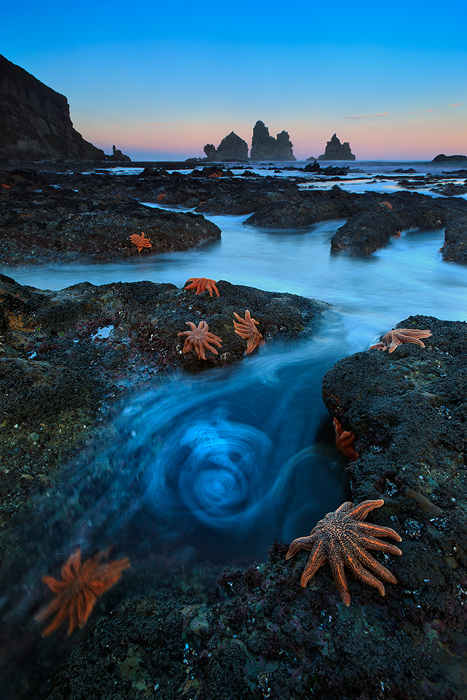 Starfish Swirl © Kah Kit Yoong
Starfish Swirl © Kah Kit Yoong
The images from Kah Kit Yoong often have a striking visual presentation and impact. Even for popular locations, where most people present similar compositions, he used his vision to identify some new element, i.e., Photo “Moment of Clarity” taken at the well-known Tasman Lake in Mt Cook.
 Moment of Clarity at Tasman Lake, Mt Cook © Kah Kit Yoong
Moment of Clarity at Tasman Lake, Mt Cook © Kah Kit Yoong
Surreality and mystery are distinguishing features for many of Kah Kit’s images. When we look at Kah Kit’s photos, even those taken during the two periods of golden hour, we hardly relate them to those typical pictures depicting nice sunrises or sunsets. Instead, quite often, we feel a certain surreal and mysterious mood that inevitably invokes also our imagination about these places: are they on our planet?
 Neverland © Kah Kit Yoong
Neverland © Kah Kit Yoong
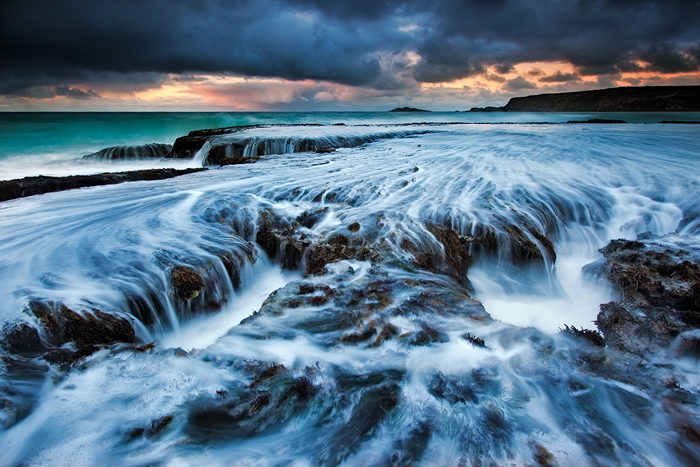 Tendrils of Fury © Kah Kit Yoong
Tendrils of Fury © Kah Kit Yoong
Representing such surreal and mysterious moods in nature and landscape photography is very challenging, because the photographer is significantly constrained by the environment where he/she is engaged. For that, we need sharp eyes for observation, in-depth visual sensitivity, and more importantly, new original ideas.
I found that such surreality and mystery has partially contributed to Kah Kit’s treatment of colour. Throughout many of his images colours definitely do not fall into the typical popular patterns: rich, warm and bright. In contrast, by mixing with some monochrome, cool and darker colour tones, Kah Kit effectively developed a surreal and mysterious feeling for many of his images. While maybe not quite in the main stream, e.g., from social media based on people’s popularity voting, I think Kah Kit’s images present a distinguished personal style – perhaps the most important thing for an artist.
After I participated in Kah Kit’s New Zealand photography workshop, I started to follow his photography blogs, from which I learned more about the philosophy behind his photography practice. While most people including some well-established photographers, are now desperately seeking high popularity in social media for their images, I can see that Kah Kit has persistently retained his photography standard, and this may explain why his images could continuously win awards in various prestigious international photography competitions over the years.
Kah Kit Yoong is the photographer who inspired me the most. Greatly influenced by him, in recent years, I gradually started to establish my own style in photography: without compromising the ground principles – the pursuit of true beauty and simplicity, I always treat surreality, ethereality and mystery as important characteristics in achieving a striking image; and I pay extra attentions to subtle details and relate them to the overall scenery when I do compositions in the field. The following image is an example of such inspiration, taken during Kah Kit’s New Zealand photography workshop 2011.
Hi Kah Kit, I am very glad to get in touch with you again and thanks for agreeing to this interview.
To start, can you tell us how you got into photography? I know that you graduated from the medical school of Melbourne University – one of the leading medical schools in the world, and also once worked as a full-time doctor. What was the passion that made you change your career to become a professional photographer? And has anyone inspired you in photography?
Firstly, thanks for the opportunity to be interviewed in this forum. It’s been a pleasure to watch your photography develop since our workshop together those few years ago.
You’re correct Yan, I graduated from the University of Melbourne with a medical degree. My interest in photography developed quite suddenly and unexpected since up to the time I held a D-SLR in my hands, I had no previous desire to even take it up as a hobby. I think many budding landscape photographers in the mid 2000’s like myself were inspired by the TimeCatcher group which comprised Patrick Di Fruschia, Jay Patel, Marc Adamus, Kenneth Kwan, Ian Cameron and Adam Burton. Not long after Adam Gibbs, Darwin Wiggett and myself were invited to join them.
What makes me passionate about photography? There’s really no single simple answer. The reason I feel inspired to make an image varies depending on the situation. It might be simply the desire to preserve what I saw at a moment in time to something more complex like capturing how I felt or the mood of a particular scene.
I understand that since the beginning of your photography practice, you have been doing some photography including human subjects. I am specifically interested in your images you made in Venice. May you tell us some more about the story behind these images, for instance, what brought you to be interested in photographing such subjects?
I started including people in my photography from 2008 onwards. I visited Venice in 2005, on my first major trip abroad which also served as my main introduction to photography. To be honest I wasn't a great fan of that city back then. Touristy and over-priced, it didn’t make much of an impression on me after experiencing many charming historical Italian towns in Tuscany and Umbria.
But during that initial visit I become interested in the shops selling Venetian masks and postcards of elaborately dressed characters wandering around the floating city. I decided that one of my bucket list items would be to visit Venice during Carnevale and photograph these masked people.
The opportunity arose a few years later, testing out and writing an article about Canon’s new flagship D-SLR, the 1DsMkIII. I booked myself on Charlie Waite’s company “Light and Land” Venice workshop in 2008. It turned out to be an overwhelming experience for the senses. Carnevale photography is often frantic for first timers. It’s most often the case of ‘shoot first, think later’. There are literally thousands of photographers; being able to think straight and creatively in such circumstances is difficult. Even so, I came away with many photographs that I was happy with. My photo “The Great Show” of Arnaldo, one of the most famous Carnevale masks became quite well known that year.
Two years later when I returned for my second Carnevale, I was starting to fall in love with Venice. I made a photo “Show Stopper” which finally captured for me all the drama and surreality of the festival. It was also the beginning of my collaboration and friendship with that character Sophie Farfalla. Over the next few years, I came to know more of these ‘masks’ who often go every year with one or more new costumes. We do a lot of private shoots which has the advantage of peace and quiet without hundreds of photographers from around the world.
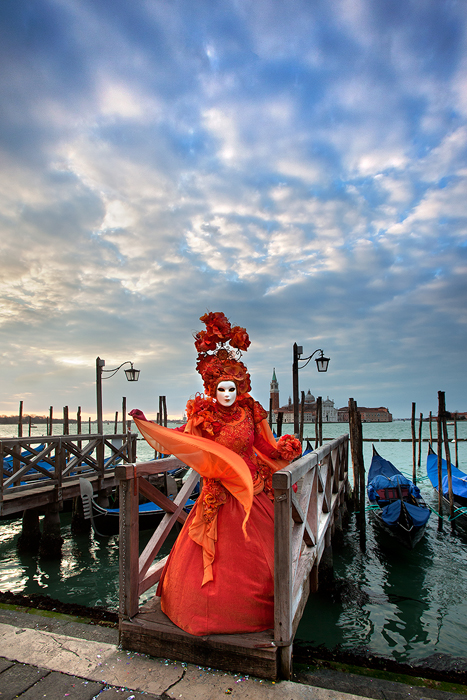 Show Stopper © Kah Kit Yoong
Show Stopper © Kah Kit Yoong
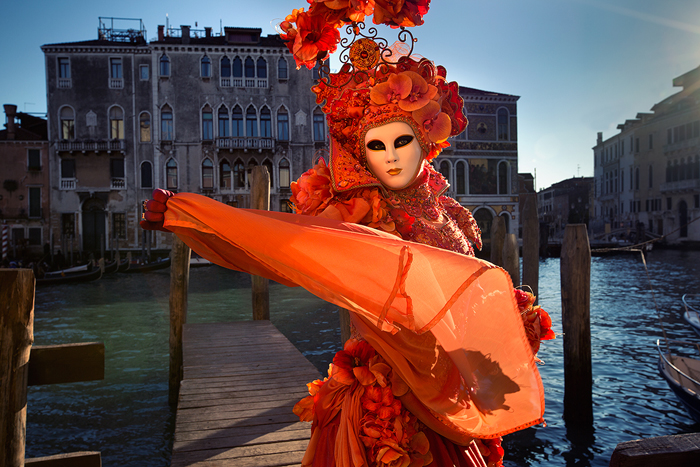 Breeze © Kah Kit Yoong
Breeze © Kah Kit Yoong
 The Great Show © Kah Kit Yoong
The Great Show © Kah Kit Yoong
When people view your landscape photos, they usually agree that you have defined a personal artistic style that, to some extent, differentiates you from many others. Can you tell us what is (are) the most important thing(s) you have been trying to express with your work?
I think that defining one’s own style is a difficult endeavour however people do often say that they can recognize my work quite easily. It is interesting that even though I have been trying to extend my range of landscapes in terms of mood, emotion and creativity, that personal signature remains in spite of me attempting to do things differently.
I would say that the most important thing is to actually have a message. Know what you want to express and then figure out the best way to get that across, simply and without distractions.
Personally, I was greatly affected by your photography. For instance, many of your works embedded something of getting into the details of the subject and also relating them to the rest of the frame, or seeking a kind of surreal scenery, these usually are more difficult than simply taking “pretty” pictures. Can you explore this a bit further? What are the challenges for capturing these features in landscape photography?
My approach to these issues is related to the answer to your previous question. It’s all about finding the most effective way of expressing my ‘message’, a term which I use loosely here. This may simply be conveying the beauty of a location, capturing an emotion I felt standing there, capturing the atmosphere of some unique conditions or telling the story about a landscape.
I try to exclude elements that distract from this goal or try to diminish their impact. There is a lot of scope in positioning yourself and controlling the camera’s perspective to make things more or less important in the frame. I think also about the elements which I consider important in the scene and how they relate to one another. Such relationships can be emphasized in the composition or the opposite; I try to find the right balance.
A successful photograph is more than an image which is technically sound and follows compositional rules. I recently was looking at somebody’s photos of mountains and thought that it depicted a beautiful winter scene. The processing was good, the rocks in the foreground intelligently distributed according to the rule of thirds and the exposure was perfect. But the message (which I presume was to present the pristine beauty of a winter’s morning in the mountains), was messed up by the dominance of one of the rocks in the center foreground of the frame. It took a lot of the beauty away from the snow-capped peaks in the background. Taking a step back would have de-emphasized the not overly attractive foreground rocks and given the mountains and their reflections more prominence.
In one of the photos featured here, ‘Neverland’, I wanted to convey a dark sinister mood. The spectral shaped cloud appears to be rising up from the lake. I had originally shot this with a more extensive foreground but eventually decided that grounding the viewer took away some of that mystery. I worked on the contrast in the lake instead to bring up the vague reflections of the cloud instead and cropped off the bottom half of the original image.
It’s important to keep an eye on the big picture not just the finer points of technique and the appropriate application of compositional rules. A photo is supposed to say something!
Except for local professionals, you are probably one of the first photographers who devoted great efforts to explore the unique beauty of New Zealand landscapes. For instance, the following photo probably is one of your most famous images that I have seen many times at different places. Now, with the increasingly popular digital photography, everyday we see so many images made from New Zealand, but most of them look very similar or even identical. Has this bothered you? In your view, for a serious landscape photographer, how can he/she discover new opportunities to make fresh and good photographs even in a well-known location?
I have always tried to visit regions which I considered fertile subjects for the landscape photographer but not well represented in images. When I began my exploration of New Zealand, the hot destinations were Patagonia and Iceland. My plans had initially included both countries but I saw that many well-known landscaper photographers were going there that year; it seemed to me that a New Zealand portfolio would stand out since nobody else was traveling there.
It is true that even among local photographers, locations like Twelve Mile beach and Tasman Lake were hardly ever photographed back then. Now you will see many among the popular pages of 500px each week. While the Wanaka tree has always been a popular subject for local photographers, I think it is fair to say it has now become the most famous tree in the world!
It is inevitable that any worthy original idea or novel location remains fresh only so long. These are not easy to come by. The important thing is to try to make a big statement with those first photographs. If you don’t make a big enough impact because your images are not memorable enough, someone else will take that idea, improve on it and create the blueprint for others to copy! Seriously, it doesn’t really bother me; nothing remains original forever. From what I’ve seen in the last decade, most landscape photographers seek out subjects because they want to create something similar to what they have seen somewhere. There are a lot of fresh ideas and locations out there but it’s much easier to follow someone else’s footsteps than make your own. In a relatively undiscovered country like New Zealand (as opposed to the popular national parks in the USA), the effort to do your own scouting soon pays off.
I do look at and study other photographers’ images as research. This is mainly to see what sort of photos are already out there so that I can do things differently.
As you know, more and more amateur photographers are out there, and some of them are making very good images. It seems that the boundary between professional and amateur photography is getting vague. As a professional photographer, do you feel competition from this side? How do you deal with this?
Actually I find the distinction between amateur and professional photographers to be non-existent. There are amateurs who achieve the highest level of excellence in their work who put many professionals to shame. I don’t feel competition from amateurs as such. But I think that they are more likely to undervalue their work which has eroded the entire photography industry. I prefer to deal with what I can control and not worry about what others are doing.
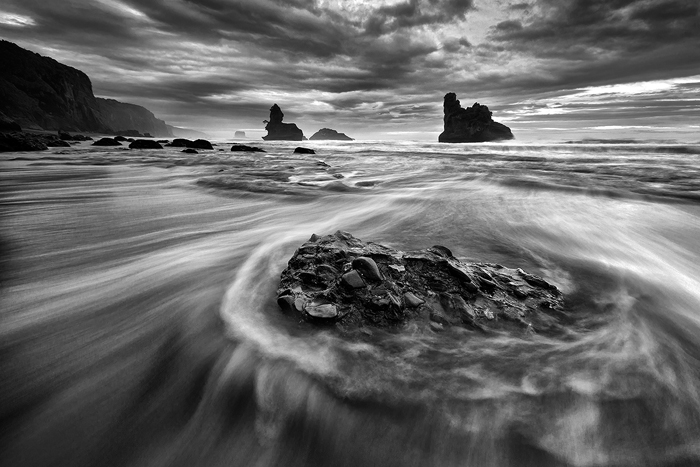 Wilderness Coast © Kah Kit Yoong
Wilderness Coast © Kah Kit Yoong
Nowadays, seeking popularity from social networks seems to have become many people’s primary goal in their photography, at least for many amateur photographers. What are your views on this trend from a professional viewpoint? In your view, what is the most important thing(s) we should pursue in nature and landscape photography? What are your essential criteria for evaluating an image?
Unfortunately that is true. For many, the ‘endgame’ of photography has become exposure rather than excellence. I have heard of photographers (both amateur and professional) presenting their images in a way that is likely to be popular rather than according to their own tastes. I think it’s sad that social networking has had such an effect on artists that they would compromise their vision in this way. Everyone has their own vision - pursuing, refining and finally achieving it is the most important goal in my opinion. When I teach people, it is my job to help them work through that process.
Although I appreciate people taking the time to look at my images on social networks, popularity is largely irrelevant in my personal evaluation of an image. As a throw back to my days as a pianist, there’s a big difference between impressing the shopping mall crowd and an adjudicating panel of professional musicians. It’s the same thing with social networks. The general population know what they like or don’t like but it is hardly a rigorous evaluation by people experienced in the field. At the end of the day, critical analysis is left to myself and a small number of people whose opinion I trust.
Despite these negative aspects, I believe that social media are a powerful tool which most professional photographer should seriously consider using. Networking through Facebook has greatly widened my opportunities at Carnevale. And last year I made a name for myself as a dance photographer through the same channels. It was mind-blowing to watch how my reach into an entirely new genre of photography would extend from an unknown entity to providing advertising images for the premier industry within a matter of hours.
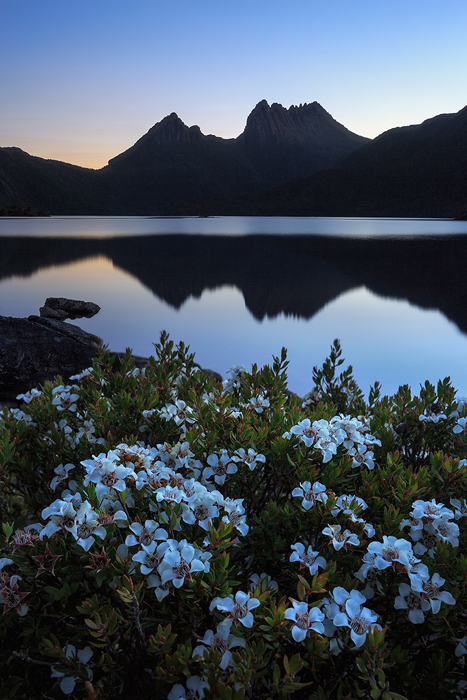 Cradle Blooms © Kah Kit Yoong
Cradle Blooms © Kah Kit Yoong
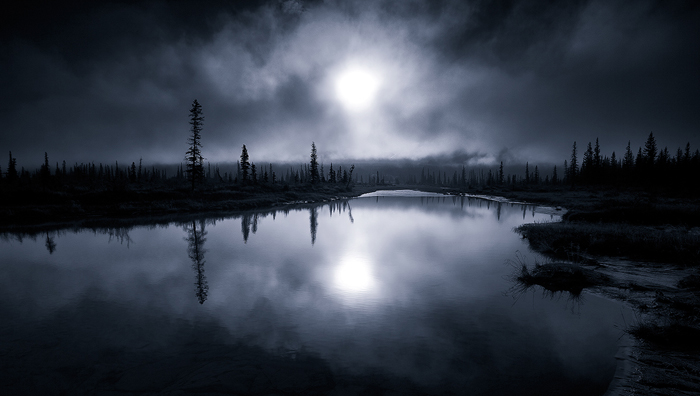 Invisible © Kah Kit Yoong
Invisible © Kah Kit Yoong
One principal difference between professional and amateur photographers is that professional photographers have to support themselves through photography, which sometimes may not directly relate to their primary interests. How do you balance this in your life?
Very true. Being a professional travel or landscape photographer is a romantic notion but I found that the reality is somewhat different. This may well be related to my personality but I have a hard time doing things not directly related to my primary interests. My priorities have changed over the past few years. I’m very selective about when I choose to take my camera out and never make images simply because it is there to be used. I’m not constantly driven to build up my portfolio, preferring to add photos only when they contribute something different to what I already have. I’m just as likely to be found enjoying the outdoors without a camera in hand as shooting landscapes nowadays.
I decided that I would rather be practicing medicine (which I enjoy) than doing things in photography which hold little interest for me. At the moment I like the balance I have struck. Each year I offer a few small private landscape/travel workshops. However, I am very excited about a collaboration with Lofoten Tours, run by Norway’s premier landscape photographer Arild Heitmann . We are co-leading a grand tour of the Lofoten Islands next year. Hopefully we will witness some good aurora activity.
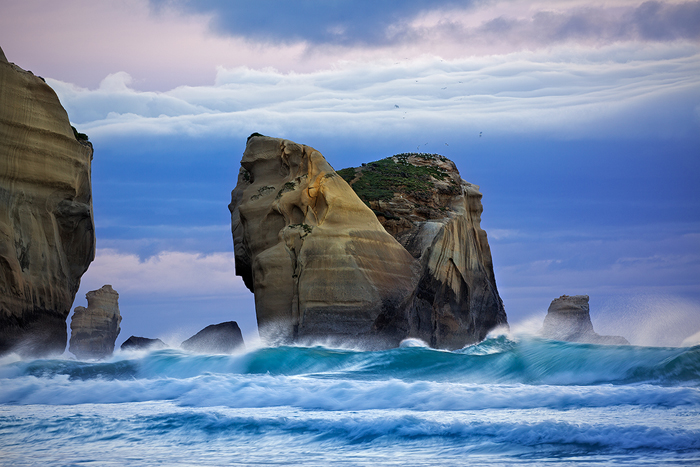 Roar @Kah Kit Yoong
Roar @Kah Kit Yoong
You have won a number of prestigious international photography competitions in past years. I noticed that this year again you have 5 images across three different categories in the shortlisted finalists in the 2014 Australian ANZANG Nature Photography of the Year competition. In general, what are the main differences between an award-winning image and a popular image, e.g., an image receiving a lot of votes and favorites on social networks? What are the benefits you have received from participating in prestigious photography competitions?
The marketing aspect of photography has never been my strong suit. Fortunately my success in competitions has worked as a form of advertisement. Before the advent of social networks and photo-sharing platforms, this was the primary way I built up my reputation.
There’s a big difference between an award-winning image and a popular one. If you look at the popular pages from social networks, they tend to feature iconic views in sweet light, pretty but there’s little to distinguish the repetitive renditions of Moraine Lake, Mesa Arch, Kirkjufell, Twelve Apostles and the like which we see over and over again. On the other hand, contests usually reward imagery which show something unexpected, creative or ‘out of the box’.
I ended winning the landscape category of ANZANG this year with ‘What Dreams Are Made Of’ which illustrates this point perfectly. It was one of the least popular landscapes I have posted over the past year on various platforms. If I had entered this competition based on how many likes or votes the image received on social networks, it is doubtful that I would have had this success. Photo selection is obviously critical. In my opinion, the most important rule in choosing images is to put yourself into the judge’s shoes. Imagine that you are on the panel and consider for what reasons the judges may single out your photograph out of thousands of other entries.
Apart from the exposure and prize money associated with success in competitions there are some less obvious benefits. One of my favourite aspects about awards nights is meeting up with other photographers, some whom I may have already become acquainted with from online forums. It’s a nice way to spend the evening, hearing others talk about their work. It’s certainly not about being Narcissistic, collecting your award and admiring your photo on a wall. Success at the Wildlife Photographer of the Year means being invited to the week of events at the British Natural History Museum in London. The opportunity to hear other photographers talk about the stories behind their winning images is always greatly inspiring.
 Canyon Delight © Kah Kit Yoong
Canyon Delight © Kah Kit Yoong
Now let’s talk about some technique issues. Can you tell us what you usually do in the photography field? What sorts of scenes mostly attract you in general? From my previous experience of attending your workshop, I observed that each time you put in a great effort the composition is right. In your opinion, what is the key for getting an appealing composition?
I’m most attracted towards locations which offer a distinctive foreground and background. If there’s something interesting in the mid-ground that’s a bonus too. I also like to work with scenes where one is not locked into only one or two compositions but offer a myriad of possibilities in many directions.
Colour palette is also something that I consider carefully. I am drawn towards scenes with contrasting colours or unusual hues. If I have an idea for a composition, I think about what sort of conditions would best complement it. “A Moment of Clarity” which I captured on our workshop together has become one of my most successful photographs. The completely cloudless sky would not normally be considered ideal light for landscapes. However, for my concept it worked well with the complex composition and contrast with the warm light on the mountain peaks.
Sometimes it is possible to manipulate the available light to your advantage. “Breeze” is such an example. I used midday light reflected from a building to create front lighting on Sophie Farfalla even though I was shooting into the sun.
The two major ingredients for a photograph are composition and light. When you’re in the field the latter is generally not a factor that can be easily modified. However composition is something that is completely under your control. Making the best use of whatever light is available is also a compositional skill.
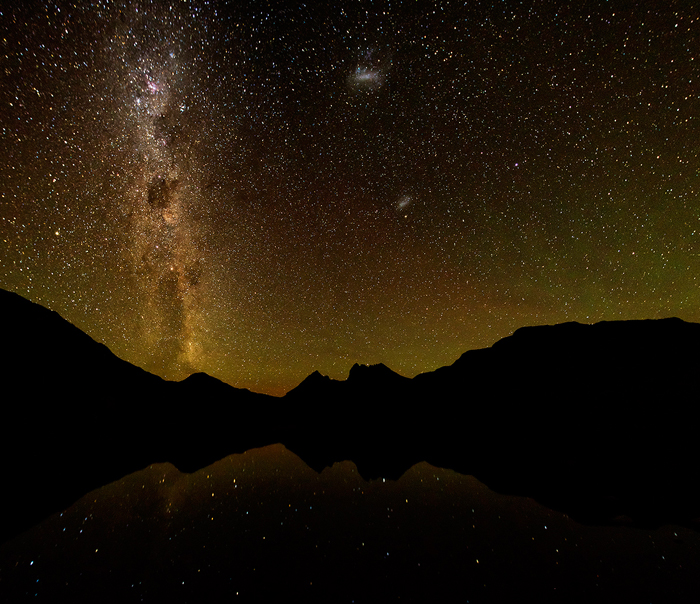 What Dreams are Made of © Kah Kit Yoong
What Dreams are Made of © Kah Kit Yoong
For processing your images, what tools do you use and what is your general work-flow for processing an image?
With the powerful Photoshop and other digital image processing tools, we see nowadays more and more “over cooked” images on the Internet, and people’s aesthetic taste seems also to be more tolerant for this trend. What are your principles and boundaries of image post-processing?
My work-flow is really nothing too fancy by current standards. I draw out as much dynamic range as I require by multiple passes through the RAW converter and then work the contrasts and colour in Photoshop proper. I find that Nik software and Tony Kuyper’s suite of actions complement my work-flow well as finishing touches.
I agree that the past couple of years have seen greater popularity of more highly processed landscapes. What was considered ‘overcooked’ 5 years ago might now be accepted as pretty normal processing. I wonder if this trend continues whether it will eventually erode the way landscape photography is perceived. As the final result deviates further and further from reality it is possible that landscapes are seen as a figment of the artist’s imagination rather than something derived from the natural world.
I have some principles which govern how I approach both my landscape and travel photography. My preference is to present a version of the scene optimized for contrast and colour. My style has an emphasis on clarity, clean details with a natural-looking colour palette based on the real experience. I would not make big changes in colour balance such as changing a blue sky to purple or composite in a sky from another shoot. I can however respect and appreciate the work of others not bound by my personal boundaries. When going beyond these limits in processing, I do think the photographer has a duty to disclose such liberties in their image creation.
 Into the Vortex © Kah Kit Yoong
Into the Vortex © Kah Kit Yoong
There are so many images made from Mount Cook, New Zealand. The following one probably is one of the most special ones I have ever seen so far. Do you mind sharing with us how you made this image? And what techniques you used to achieve this effect?
Thanks Yan, I have to confess that at the moment I captured this image, I never envisaged that it would eventually become one of my personal favourites. The title of the photo is called “Desperate Measures” because the behind the scenes situation was really quite frantic. I had carefully set up my composition with this iceberg. As usual I was standing in the ice cold water (this time I stripped down to underwear and sandals since nobody was around) ready to shoot the sunset. Then, at the crucial moment the piece of ice suddenly started to spin and float down the river. I desperately lunged to save it and using my tripod managed to haul it back towards the shore. In fact the sunset was nothing to write home about but the dull conditions forced me to think differently about how I could best make use of the light. The subtle reflection of the cloud on the piece of ice and the surrounding water was the key to making the photo work. In monochrome, I was able to emphasize the glow in a more natural way than it would have been possible in colour. In the end concentrating on creating a dark and ominous mood helped to make this a distinctive Mount Cook shot since almost everyone else focuses on sweet light, colour and reflections. In the past couple of years, I have expanded my repertoire to include more brooding imagery.
Thank you very much, I really appreciate you sharing so much about your photography with us today.
Yan Zhang ( see his website ).
A highlight of Kah Kit’s recent photography awards:
- Digital Camera Photographer of the Year: 1st Prize Landscape
- Travel Photographer of the Year: finalist
- Australian Geographic ANZANG: 1st prize in landscape, B&W, threatened species
- BBC Veolia Wildlife Photographer of the Year: 2nd prize Wild Places, Animals in their Environment
- New Zealand Geographic Photographer of the Year: 1st prize Landscape, People’s Prize
 | Write |
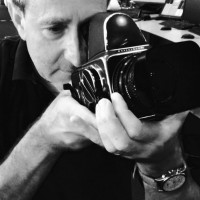 | Nick van Dijk I just had the enormous pleasure of reading your very interesting interview Yan! What a fantastic photographer Kah Kit Yoong is!
Thank you Yvettte for getting this together here on 1x,
Grtz, Nick
|
 | Yvette Depaepe CREW Thanks for your compliment, Nick !!! I always feel blessed to be the first to read those photostories and interviews ;-) Yan is doing a fantastic job and yes, Kah Kit Yoong is one fantastic photographer. I hope many members will discover him now. Cheers, Yvette |
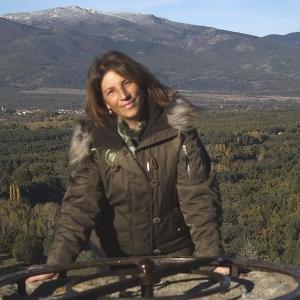 | Ana Mínguez Corella Wonderful pictures.. Congrats and regards from Spain.. |
 | Yvette Depaepe CREW Thanks for your appreciation for everybody involved, Ana !!! |
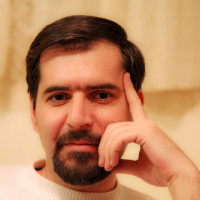 | Mohammad Soheilinia In this series of photos can be extraordinary images of nature that Australia has found a very professional and smart with special cameras and lenses were photographed,
Thanks to all and BRAVO! |
 | Yvette Depaepe CREW Thanks for your appreciation, Mohammad !!! |